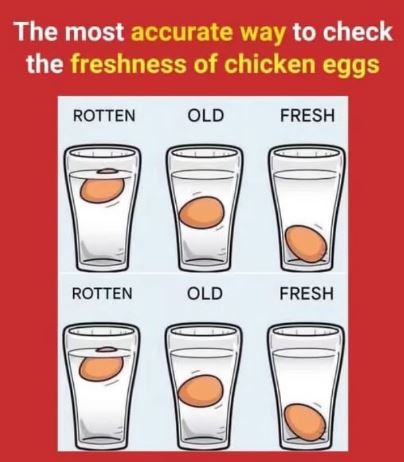The Best Way to Check If Your Eggs Are Still Fresh (And Yes, It Actually Works!)

Eggs are a kitchen staple—whether you’re frying them up for breakfast, baking cookies, or using them to bind meatballs. But when it comes to eggs, freshness matters more than you might think. A fresh egg doesn’t just taste better—it cooks better, performs better in recipes, and is far safer to eat. So how can you tell if the eggs in your fridge are still good?
The good news? You don’t need any fancy gadgets or guesswork. There are simple, time-tested methods you can use at home to check the freshness of your eggs—and the results are surprisingly reliable.
Why Freshness Matters More Than You Think
Before we get into the methods, let’s talk about why egg freshness isn’t just about taste—it also affects:
- Flavor and Texture:
Fresher eggs have a richer flavor and firmer texture. This is especially noticeable in dishes where eggs are the star, like poached eggs or a soft scramble. - Cooking and Baking Performance:
In baking, fresh eggs help give structure and lift to cakes and meringues. Older eggs tend to have watery whites and flatter yolks, which can impact the final result. - Food Safety:
While eggs can last weeks past the sell-by date if refrigerated properly, they do spoil eventually. Knowing how to spot a bad egg can help you avoid foodborne illness.
How to Check If an Egg Is Fresh
You don’t need to crack every egg just to check. Try these simple and effective methods to determine whether your eggs are still safe to eat:
1. Check the Date on the Carton
Start here, but don’t stop here. The “sell-by” or expiration date is a helpful reference—but eggs, when stored in the refrigerator, often stay fresh for weeks after that date. Use it as a guideline, not a hard rule.
2. The Float Test (The Most Reliable Trick)
- Fill a bowl or glass with cold water.
- Gently lower your egg into the water.
Here’s what it means:
- Sinks and lies flat on the bottom: Very fresh
- Sinks but stands upright: Still safe to eat, but not as fresh
- Floats to the top: Spoiled—toss it immediately
Why it works: As eggs age, the air pocket inside them grows, making them more buoyant.
3. The Shake Test
- Hold the egg near your ear and shake it gently.
If you hear sloshing, that’s a sign the egg is old and the contents have become watery. A fresh egg will be quiet with no noticeable sound.
4. Crack and Observe
If you’re still unsure, crack the egg onto a plate (not into your ingredients just yet!).
- Fresh egg: Rounded yolk that stands up, thick and gel-like white.
- Older egg: Flatter yolk, runny and watery white that spreads out.
This method is especially helpful if you plan to cook the egg right away.
5. Trust Your Nose
The sniff test never fails. A spoiled egg has a strong, unmistakable sulfur smell that you’ll notice immediately once cracked. If it smells even a little “off,” don’t risk it—throw it out.
Conclusion
Checking egg freshness doesn’t require any guesswork. With a bowl of water, your nose, or even a gentle shake, you can easily figure out if an egg is good to go or headed for the trash. It’s a quick habit that can make your cooking safer, tastier, and more reliable.
Tip: Want to avoid this guessing game in the future? Try writing the purchase date on your egg carton with a marker. That way, you’ll always have a clear idea of how long they’ve been in your fridge.